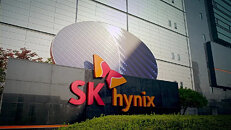- Joined
- May 21, 2024
- Messages
- 1,224 (3.54/day)
SK Hynix plans to produce its 6th generation high-bandwidth memory chips (HBM4) using TSMC's 3 nm process, a change from initial plans to use the 5 nm technology. The Korea Economic Daily reports that these chips will be delivered to NVIDIA in the second half of 2025. NVIDIA's GPU products are currently based on 4 nm HBM chips. The HBM4 prototype chip launched in March by SK Hynix features vertical stacking on a 3 nm die., compared to a 5 nm base die, the new 3 nm-based HBM chip is expected to offer a 20-30% performance improvement. However, SK Hynix's general-purpose HBM4 and HBM4E chips will continue to use the 12 nm process in collaboration with TSMC.
While SK Hynix's fifth-generation HBM3E chips used its own base die technology, the company has chosen TSMC's 3 nm technology for HBM4. This decision is anticipated to significantly widen the performance gap with competitor Samsung Electronics, which plans to manufacture its HBM4 chips using the 4 nm process. SK hynix is currently leading the global HBM market with almost 50% of market share, most of its HBM products been delivered to NVIDIA.

View at TechPowerUp Main Site | Source
While SK Hynix's fifth-generation HBM3E chips used its own base die technology, the company has chosen TSMC's 3 nm technology for HBM4. This decision is anticipated to significantly widen the performance gap with competitor Samsung Electronics, which plans to manufacture its HBM4 chips using the 4 nm process. SK hynix is currently leading the global HBM market with almost 50% of market share, most of its HBM products been delivered to NVIDIA.

View at TechPowerUp Main Site | Source


